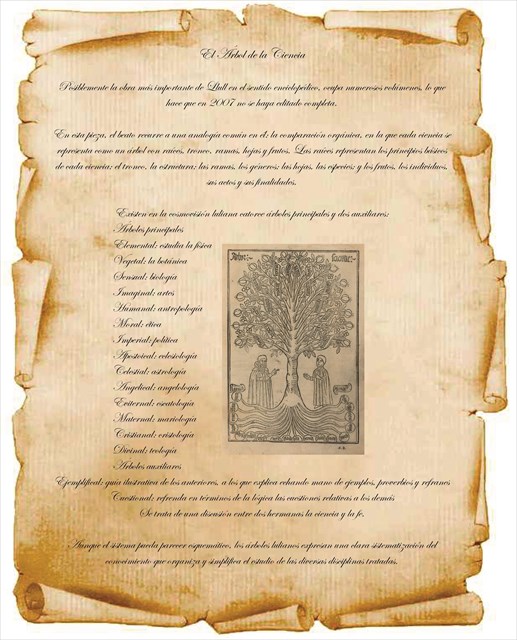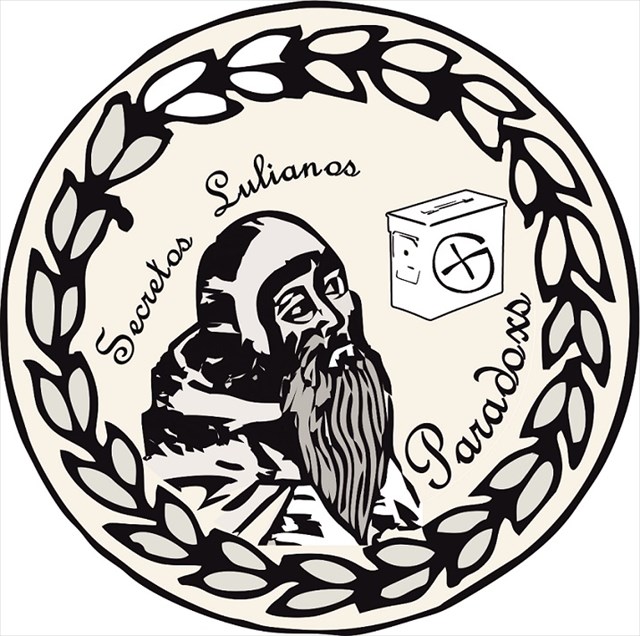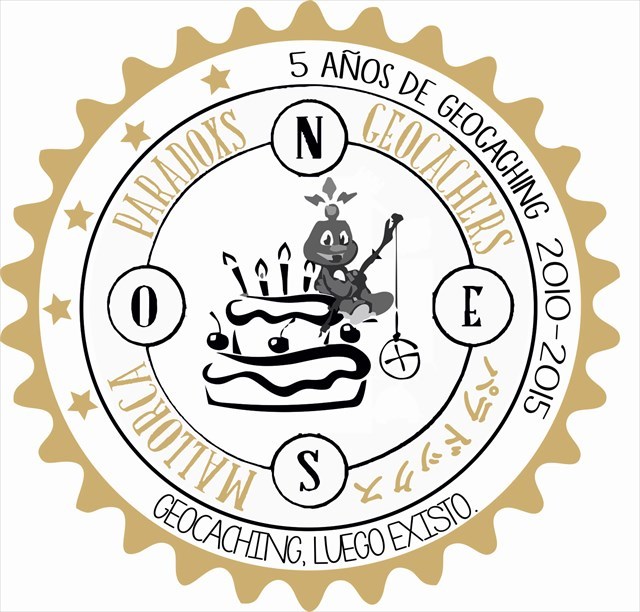Sa Cova des Beat
El Árbol de la Ciencia
La Máquina
El Razonamiento
Ascenso y Descenso del Entendimiento
El Fin de los Secretos
Los Secretos Lulianos es una serie de cachés que te adentrará en una aventura llena de curiosidades, misterios y secretos con la que queremos conseguir dos objetivos:
El primero es hacer memoria sobre el personaje de Ramón Llull, su vida, su obra y su pensamiento.
Además de ser considerado una figura muy importante en el uso de las lenguas, especialmente el de la lengua catalana escrita, también destaca la cantidad de campos en los que realizó aportaciones, destacando la Teología y la Filosofía. En cuanto a su obra y pensamientos, tomamos parte de ellos para representación de los Secretos, simplemente como reseñas y en algunos casos como solución si son interpretados desde los prismas adecuados.
El segundo objetivo es conducir esta aventura a las entrañas del bosque donde Ramón Llull encontró su hogar, en el monasterio de Miramar, entre el 1279 y el 1295. Para ello os conduciremos por algunos rincones significativos y otros tan nimios que son capaces de ocultar los más grandes misterios.
Esta serie es un desafío. Necesitarás varias horas para completarla, asi que no olvides traer suficiente agua y un calzado adecuado. Necesitarás mucha paciencia y tal vez un poco de ingenio. Y necesitarás traer tu propio boli/lápiz.
NO USES LA FUERZA PARA ABRIR LAS CAJAS. Y POR FAVOR DEJA TODO COMO ESTABA. SI NO ABRES LA CAJA Y ESCRIBES EN EL LOGBOOK, NO PUEDES REGISTRAR EL CACHÉ COMO FOUND.
El Árbol de la Ciencia

El Árbol de la Ciencia, 1505.
Posiblemente la obra más importante de Llull en el sentido enciclopédico; ocupa numerosos volúmenes, lo que hace que en 2007 no se haya editado completa.
En esta pieza, el beato recurre a una analogía común en él: la comparación orgánica, en la que cada ciencia se representa como un árbol con raíces, tronco, ramas, hojas y frutos. Las raíces representan los principios básicos de cada ciencia; el tronco, la estructura; las ramas, los géneros; las hojas, las especies; y los frutos, los individuos, sus actos y sus finalidades.
Existen en la cosmovisión luliana catorce árboles principales y dos auxiliares:
Árboles principales
Elemental: estudia la física
Vegetal: la botánica
Sensual: biología
Imaginal: artes
Humanal: antropología
Moral: ética
Imperial: política
Apostoical: eclesiología
Celestial: astrología
Angelical: angelología
Eviternal: escatología
Maternal: mariología
Cristianal: cristología
Divinal: teología
Árboles auxiliares
Ejemplifical: guía ilustrativa de los anteriores, a los que explica echando mano de ejemplos, proverbios y refranes
Cuestional: refrenda en términos de la lógica las cuestiones relativas a los demás
Se trata de una discusión entre dos hermanas: la ciencia y la fe.
Aunque el sistema pueda parecer esquemático, los árboles lulianos expresan una clara sistematización del conocimiento que organiza y simplifica el estudio de las diversas disciplinas tratadas.



Beatified Man’s Cave
The Tree of Science
The Machine
The Reasoning
Rise and Fall of Understanding
The End of the Secrets
Lullian Secrets is a series of caches that offers you an adventure full of curiosities, mysteries and secrets, with which we want to achieve two objectives:
The first is to remember the character of Ramón Llull: his life, his work and his thought.
Besides being considered a very important figure in the use of languages - especially in written Catalan - he also stands out for the number of fields in which he made contributions, particularly in theology and philosophy. As for his work and thoughts, we take part of them to represent the Secrets, sometimes just as reviews, and in some cases as a solution if they are interpreted from the right point of view.
The second objective is to lead this adventure into the depths of the forest where Ramón Llull found his home - in the Miramar monastery - between 1279 and 1295. To do this, you'll walk through some significant corners and some other so trivial that they are able to hide the greatest mysteries.
This series is a challenge. You will need several hours to complete it, so do not forget to bring enough water and suitable shoes. You will need a lot of pacience and some wit. And you will need to bring your own pen.
DON'T USE FORCE TO OPEN THE BOXES. AND PLEASE LEAVE EVERYTHING AS YOU FOUND IT FOR THE NEXT GEOCACHER. IF YOU DON'T OPEN THE BOX AND WRITE IN THE LOGSHEET, YOU CAN NOT LOG THE CACHE AS FOUND.
The Tree of Science

The Tree of Science, 1505.
Probably the most important work of Llull in the encyclopedic sense: it's composed of a large quantity of volumes, and for this reason in 2007 it has still not been edited completely.
In this work, Beatified Ramon resorts to a commonly used analogy: the organic comparison, in which each science is represented as a tree with roots, trunk, branches, leaves and fruits. The roots represent the basic principles of each science; the trunk represents the structure; the branches, gender; leaves, species; and fruits represent individuals, their acts and purposes.
In Llull's cosmic vision there exist fourteen major trees and two secondary ones:
Major trees
Elemental: studies physics
Vegetal: botany
Sensual: biology
Imaginal: arts
Humanal: anthropology
Moral: ethics
Imperial: politics
Apostoical: ecclesiology
Celestial astrology
Angelical: angelology
Eviternal: eschatology
Maternal: mariology
Christianal: christology
Divinal: theology
Secondary trees
Exemplifical: Illustrative guide of the above, which explains the major trees making use of examples, proverbs and sayings
Questional: Endorses in terms of logic issues relating to the other trees
It is a discussion between two sisters: Science and Faith.
While the system may seem schematic, the Lullian trees express a clear systematization of knowledge that organizes and simplifies the study of the various disciplines treated.



Beatified Man’s Cave
The Tree of Science
The Machine
The Reasoning
Aufstieg und Fall des Verständnisses
Das Ende der Geheimnisse
Lulianos Geheimnisse ist eine Cacheserie, die dir ein Abenteuer voller Merkwürdigkeiten, Mysterien und Geheimnissen bietet, bei denen es um zwei Dinge geht:
Erinnerung an die Person Ramón Llull: sein Leben, seine Arbeit und seine Gedanken.
Abgesehen davon, dass er eine wichtige Rolle beim Gebrauch von Sprachen - inbesondere beim geschriebenen Katalan- gespielt hat, fällt sein Name ebenso in weiteren Bereichen, zu denen er Beiträge geliefert hat (besonders in Religion und Philosophie). Durch seine Arbeit und Gedanken nehmen wir teil an den Geheimnissen, manchmal nur im Überblick, in einigen Fällen als Lösung, wenn sie vom richtigen Standpunkt aus betrachtet werden.
Das zweite Ziel ist es, das Abenteuer in die Tiefe des Waldes zu leiten, wo Ramón Llull zwischen 1279 und 1295 ein zu Hause gefunden hat: im Miramar Kloster. Dafür musst du einige bedeutende Stellen aufsuchen, sowie andere, die wiederum so nichtssagend aussehen, dass sie in der Lage sind, die größten Geheimnisse zu bewahren.
Diese Serie ist eine Herausforderung! Du wirst mehrere Stunden benötigen, vergess daher nicht genügend Wasser und geeignete Schuhe mitzunehmen! Du wirst eine Menge Geduld und Köpfchen benötigen. außerdem brauchst du noch einen Stift.
VERWENDE KEINE GEWALT BEIM ÖFFNEN DER DOSEN! UND HINTERLASSE BITTE ALLES, SO WIE DU ES VORGEFUNDEN HAST, DEM NÄCHSTEN CACHER. WENN DU DIE DOSE NICHT ÖFFNEN UND DICH NICHT INS LOGBUCH EINTRAGEN KANNST, DANN DARFST DU DIESEN CACHE AUCH NICHT ALS FOUND LOGGEN.


